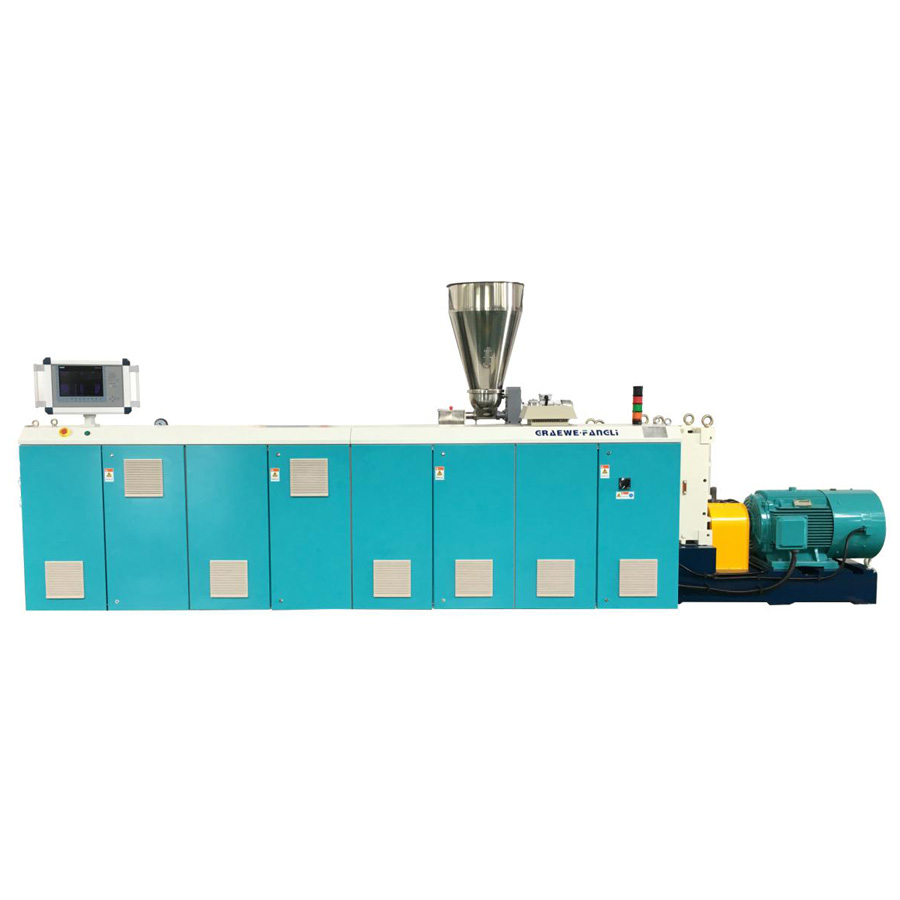Features and advantages of Extrusion Line for Solid Wall Pipe
2023-10-18
An extrusion line for solid wall pipe is a manufacturing system used to produce solid pipes with a consistent diameter and thickness. It involves a series of processes and machinery that convert raw materials into finished solid wall pipes. Here are some key features and advantages of an extrusion line for solid wall pipe:
1. Extrusion Process: The extrusion line utilizes the extrusion process, where raw material in the form of pellets or powder is melted and forced through a die to form a continuous profile of the desired shape. In the case of solid wall pipes, the molten material is shaped into a cylindrical pipe.
2. Consistent Pipe Dimensions: The extrusion line ensures the production of solid wall pipes with uniform dimensions, including diameter and wall thickness. This consistency is crucial for the pipes to meet the required specifications and perform reliably in their intended applications.
3. Wide Range of Pipe Sizes: Extrusion lines for solid wall pipes can be designed to produce a wide range of pipe sizes, allowing for flexibility in meeting various application requirements. The diameter and wall thickness can be adjusted by changing the die and calibration tools, enabling the production of pipes with different dimensions.
4. High Production Speed: Extrusion lines are capable of high production speeds, resulting in increased output and efficiency. The continuous extrusion process allows for a continuous flow of material, minimizing downtime and maximizing productivity.
5. Material Versatility: Solid wall pipes can be manufactured using various thermoplastic materials such as PVC (Polyvinyl Chloride), PE (Polyethylene), PP (Polypropylene), and more. The extrusion line can be configured to process different materials, providing versatility in material selection for specific applications.
6. Quality Control: Extrusion lines for solid wall pipes often incorporate quality control mechanisms to ensure the production of pipes that meet the required standards. These mechanisms may include monitoring systems for dimensional accuracy, wall thickness, and visual defects. This helps maintain consistent quality throughout the manufacturing process.
7. Energy Efficiency: Many modern extrusion lines are designed with energy-efficient features. These may include efficient heating and cooling systems, optimized motor controls, and insulation to reduce energy consumption during production. Energy-efficient extrusion lines help minimize operational costs and environmental impact.
8. Automation and Integration: Extrusion lines can be equipped with automation and control systems to streamline the manufacturing process. Automated controls ensure precise control over various parameters, such as temperature, pressure, and speed, enhancing process reliability and consistency. Integration with other downstream equipment, such as cutters, coilers, or printers, can further enhance production efficiency.
9. Easy Maintenance and Serviceability: Extrusion lines are designed for easy maintenance and serviceability. Accessible components, quick-change mechanisms, and standardized parts facilitate maintenance tasks, reducing downtime and ensuring smooth operation.
10. Scalability: Extrusion lines can be scaled up or down based on production requirements. Additional extruders or downstream equipment can be added to increase production capacity, while modular designs allow for future expansions or modifications.
Overall, an extrusion line for solid wall pipe offers features such as consistent pipe dimensions, a wide range of sizes, high production speed, material versatility, quality control, energy efficiency, automation, easy maintenance, and scalability. These features contribute to efficient and reliable production of solid wall pipes for various applications in industries such as plumbing, construction, agriculture, and more.



